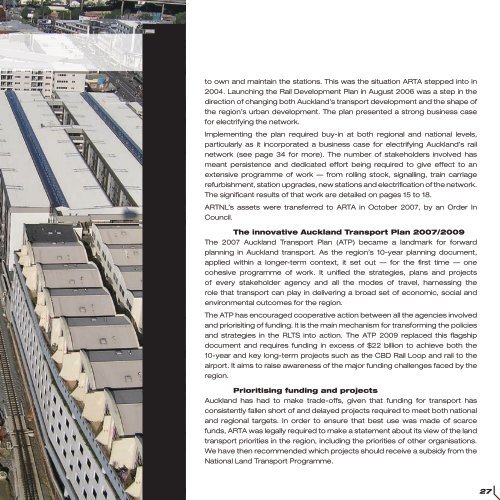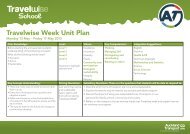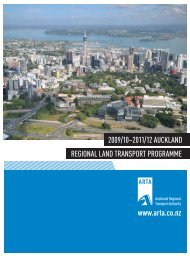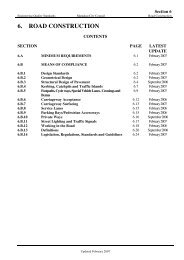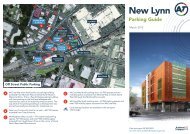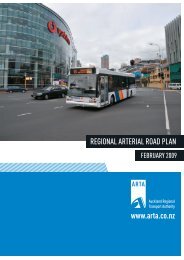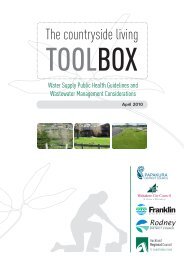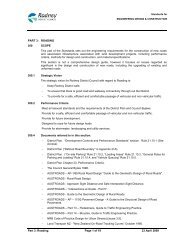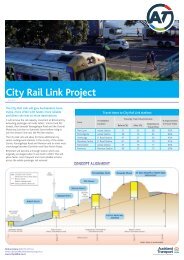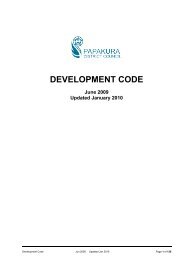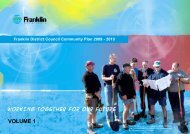The ARTA Years 2004 â 2010 - Auckland Transport
The ARTA Years 2004 â 2010 - Auckland Transport
The ARTA Years 2004 â 2010 - Auckland Transport
Create successful ePaper yourself
Turn your PDF publications into a flip-book with our unique Google optimized e-Paper software.
to own and maintain the stations. This was the situation <strong>ARTA</strong> stepped into in<br />
<strong>2004</strong>. Launching the Rail Development Plan in August 2006 was a step in the<br />
direction of changing both <strong>Auckland</strong>’s transport development and the shape of<br />
the region’s urban development. <strong>The</strong> plan presented a strong business case<br />
for electrifying the network.<br />
Implementing the plan required buy-in at both regional and national levels,<br />
particularly as it incorporated a business case for electrifying <strong>Auckland</strong>’s rail<br />
network (see page 34 for more). <strong>The</strong> number of stakeholders involved has<br />
meant persistence and dedicated effort being required to give effect to an<br />
extensive programme of work — from rolling stock, signalling, train carriage<br />
refurbishment, station upgrades, new stations and electrification of the network.<br />
<strong>The</strong> significant results of that work are detailed on pages 15 to 18.<br />
ARTNL’s assets were transferred to <strong>ARTA</strong> in October 2007, by an Order In<br />
Council.<br />
<strong>The</strong> innovative <strong>Auckland</strong> <strong>Transport</strong> Plan 2007/2009<br />
<strong>The</strong> 2007 <strong>Auckland</strong> <strong>Transport</strong> Plan (ATP) became a landmark for forward<br />
planning in <strong>Auckland</strong> transport. As the region’s 10-year planning document,<br />
applied within a longer-term context, it set out — for the first time — one<br />
cohesive programme of work. It unified the strategies, plans and projects<br />
of every stakeholder agency and all the modes of travel, harnessing the<br />
role that transport can play in delivering a broad set of economic, social and<br />
environmental outcomes for the region.<br />
<strong>The</strong> ATP has encouraged cooperative action between all the agencies involved<br />
and priorisiting of funding. It is the main mechanism for transforming the policies<br />
and strategies in the RLTS into action. <strong>The</strong> ATP 2009 replaced this flagship<br />
document and requires funding in excess of $22 billion to achieve both the<br />
10-year and key long-term projects such as the CBD Rail Loop and rail to the<br />
airport. It aims to raise awareness of the major funding challenges faced by the<br />
region.<br />
Prioritising funding and projects<br />
<strong>Auckland</strong> has had to make trade-offs, given that funding for transport has<br />
consistently fallen short of and delayed projects required to meet both national<br />
and regional targets. In order to ensure that best use was made of scarce<br />
funds, <strong>ARTA</strong> was legally required to make a statement about its view of the land<br />
transport priorities in the region, including the priorities of other organisations.<br />
We have then recommended which projects should receive a subsidy from the<br />
National Land <strong>Transport</strong> Programme.<br />
27


